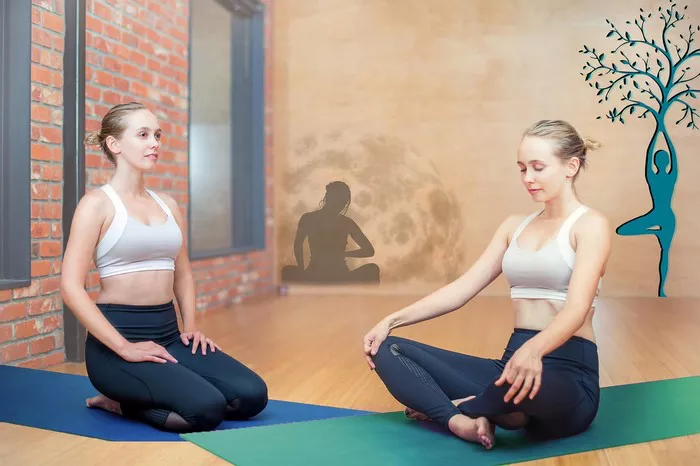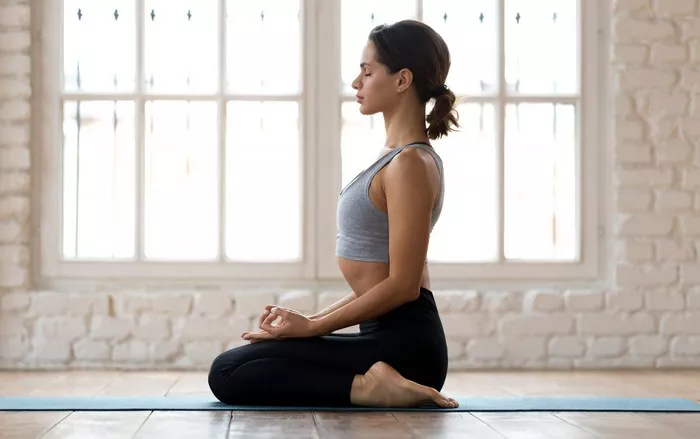In Ashtanga Yoga, the practice is deeply rooted in three key elements: breath (pranayama), posture (asana), and gaze (drishti). Drishti, which means “gaze” or “point of focus” in Sanskrit, is an essential aspect of the practice that helps direct mental concentration, deepen awareness, and cultivate inner stillness. By integrating drishti into asana practice, students enhance their ability to remain present, avoid distractions, and refine their alignment and balance.
This article explores the nine drishti in Ashtanga Yoga, their significance, and how they influence both physical and mental aspects of the practice.
The Significance of Drishti in Ashtanga Yoga
Drishti is more than just a visual focus; it is a tool for developing concentration and meditative awareness. In Ashtanga Yoga, each asana is associated with a specific drishti, which helps:
Improve concentration: Keeping the gaze steady prevents the mind from wandering and cultivates focus.
Enhance balance: A steady gaze contributes to better stability in standing and balancing postures.
Deepen inner awareness: Drishti shifts attention inward, reducing external distractions and fostering mindfulness.
Align the spine and posture: Proper gaze direction aids in maintaining correct posture and spinal integrity.
Cultivate meditative awareness: The combination of breath, movement, and gaze helps establish a moving meditation.
The 9 Drishti in Ashtanga Yoga
Ashtanga Yoga defines nine drishti, each corresponding to different postures and movements. They are as follows:
1. Nasagra Drishti (Nose Tip Gaze)
Nasagra drishti involves focusing the gaze at the tip of the nose. This drishti is commonly used in forward folds and poses like Chaturanga Dandasana (Four-Limbed Staff Pose) and Urdhva Mukha Svanasana (Upward-Facing Dog). It helps calm the mind, increase focus, and enhance breath awareness.
2. Bhrumadhya Drishti (Third Eye Gaze)
Bhrumadhya drishti directs the gaze to the space between the eyebrows, often referred to as the “third eye.” This drishti is primarily used in meditative postures such as Padmasana (Lotus Pose) and poses like Urdhva Dhanurasana (Upward Bow Pose). It is believed to stimulate spiritual insight and awaken intuition.
3. Nabhi Drishti (Navel Gaze)
Nabhi drishti requires focusing the eyes on the navel or belly. It is typically used in downward-facing postures such as Adho Mukha Svanasana (Downward-Facing Dog). This gaze enhances spinal alignment, aids digestion, and draws awareness inward.
4. Hastagra Drishti (Hand Gaze)
Hastagra drishti involves directing the gaze toward the hand. It is commonly used in standing poses such as Trikonasana (Triangle Pose) and Utkatasana (Chair Pose). This drishti helps refine alignment and increase body awareness.
5. Padayoragra Drishti (Toes Gaze)
Padayoragra drishti focuses on the toes and is often used in seated forward folds such as Paschimottanasana (Seated Forward Bend) and Uttanasana (Standing Forward Bend). It enhances spinal extension, encourages introspection, and calms the nervous system.
6. Parsva Drishti (Side Gaze – Right and Left)
Parsva drishti refers to looking to the right or left side, depending on the direction of the pose. It is commonly used in twisting poses like Parivrtta Trikonasana (Revolved Triangle Pose) and Marichyasana C. This drishti helps in maintaining balance and deepening spinal rotation.
7. Angusta Ma Dyai Drishti (Thumb Gaze)
Angusta Ma Dyai drishti involves focusing on the thumb. This drishti is often used in upward-reaching poses such as Virabhadrasana I (Warrior I) and Urdhva Hastasana (Upward Salute). It aids in maintaining alignment and expanding the chest.
8. Urdhva Drishti (Upward Gaze)
Urdhva drishti directs the gaze upward, usually toward the ceiling or sky. It is utilized in backbending postures such as Urdhva Mukha Svanasana (Upward-Facing Dog) and Urdhva Dhanurasana (Wheel Pose). This drishti encourages heart opening and enhances spinal extension.
9. Adho Drishti (Downward Gaze)
Adho drishti involves looking downward and is frequently applied in standing balances like Virabhadrasana III (Warrior III) and Bakasana (Crow Pose). It improves balance, stabilizes the mind, and encourages grounding energy.
Integrating Drishti into Your Practice
To fully harness the benefits of drishti in your Ashtanga Yoga practice, consider the following tips:
Start with awareness: Begin by simply noticing where your gaze naturally falls in different poses.
Be mindful of soft focus: Avoid straining the eyes. The gaze should be steady yet relaxed.
Synchronize with breath: Use the gaze to support breath awareness, creating a deeper connection between mind and movement.
Practice consistently: Over time, drishti will become an intuitive part of your practice, enhancing concentration and meditation.
Conclusion
Drishti is a vital element of Ashtanga Yoga that goes beyond physical alignment; it fosters deeper concentration, stability, and meditation. By integrating the nine drishti into your practice, you cultivate a more profound awareness of breath, movement, and inner stillness. Whether you are a beginner or an advanced practitioner, refining your drishti can elevate your yoga experience, helping you remain present and connected both on and off the mat.
Related topics:























